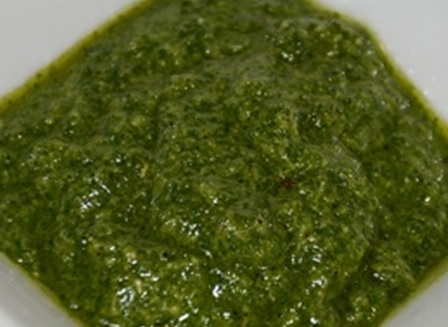When life hands you lemons, you make lemonade, but when your garden hands you an abundance of basil from only a plant or two, a pesto recipe is the order of the day. While flavoring roasted meats with herbs dates back to the very wealthy of Medieval Times the pesto recipe specifically traces back to Italy's northern region of Genoa and is believed to have originated from the Italian word "pestare", crushing or pounding as pesto was originally made by crushing fresh basil leaves with a pestle and mortar. The original recipe calls for crushing herbs to better breakdown fibers in releasing their essential oils.
A similar recipe, called "moretum", loosely meaning "salad" traces its origin back to Ancient Rome however, it was more a of cheese spread than the popular pesto of modern times circa the late 19th century when it began appearing in Italian cookbooks and the recipe has become so popular, there is a contest, thee International World Championship of Pesto held every two years at the Doge's Palace in Genoa, Italy. In fact, the pesto recipe is second only to tomato sauce for pasta throughout Italy.
The versatility of the pesto recipe lends itself far beyond pasta to include vegetable, fish, poultry and more, an though the original calls for basil substitutions have been known to include celery leaves, parsley, cilantro, red peppers, sundried tomatoes, sorrel, arugula and more. And while the traditional pesto recipe calls for pine nuts, walnuts, pistachios, cashews, almonds or sunflower seeds are all popular substitutes.
Fresh pesto keeps well in the fridge for up to a week, however, it is important that your pesto recipe be tightly covered by placing plastic wrap so that it touches the basil so it doesn't lose its brightens and begin to darken due to oxidization. A pesto recipe will last up to two months in the freezer, however, if you are creating your pesto recipe with the intention of freezing it, you may wish to forego the cheese and add it before serving.


 Cook:
Cook: 
